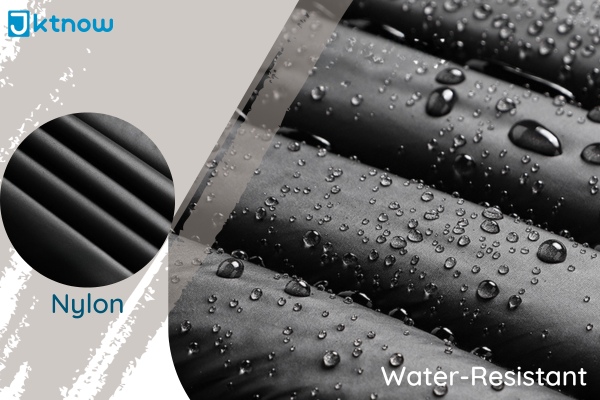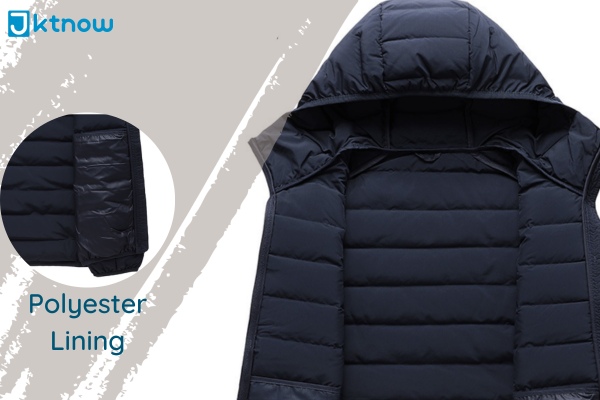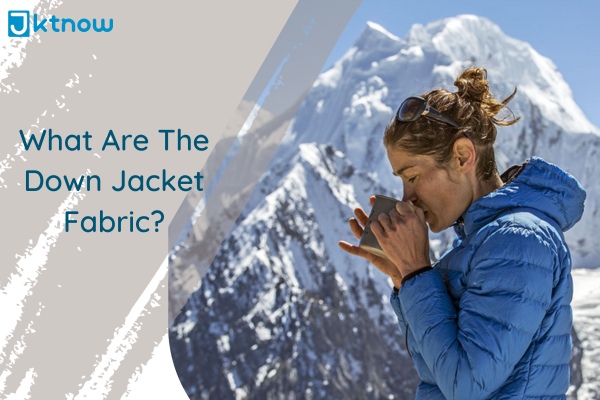Down jackets are popular for those looking for warmth and comfort in cold weather. Down jackets are renowned for their remarkable warmth and versatility. At the heart of their exceptional insulation lies the magic of down fill. Under this cozy exterior lies a complex interplay of down jacket fabric, contributing to the jacket’s overall performance and comfort.
Understanding the puffer jacket fabric is essential when you choose the jacket, as it not only influences its durability but also tailors their functionality to specific needs, just as you would when buying ski jackets or deciding between hardshell and softshell jackets for outdoor adventures. This blog will help you understand the coat fabric.
Outer Shell Fabrics: Nylon or Polyester Down Jacket Fabric
The outer shell of a down jacket serves as the first line of defense against unpredictable and often harsh outdoor conditions. This layer plays a pivotal role in shielding the wearer from wind, moisture, and abrasion while contributing to the jacket’s overall durability and lifespan. There are many types of materials, like nylon and polyester.
Nylon: Lightweight, Durable, and Water-Resistant
Nylon fabric stands out as one of the primary choices for the outer fabric of down jackets due to its exceptional combination of qualities. Its lightweight nature ensures the jacket remains comfortable and non-restrictive, celebrating this synthetic material. Furthermore, nylon boasts remarkable durability, capable of withstanding the rigors of outdoor activities without succumbing to tears or punctures quickly. Nylon taffeta and ripstop are used most often in outerwear.

One of nylon’s most coveted features is its inherent water resistance. Nylon fibers naturally repel water, allowing droplets to bead up and roll off the surface. This property is particularly beneficial in wet or snowy environments, as it prevents the fabric from becoming saturated and compromising the jacket’s insulating capabilities.
Polyester: A Budget-Friendly Option for down jacket fabric
Polyester is another common material. This type of fabric used for puffer jackets is often chosen for its affordability and versatility. While it may not possess the same level of water resistance as nylon, polyester still offers a certain degree of protection against light rain or moisture. It also provides decent windproofing, helping to maintain a comfortable internal environment even in windy conditions.
One of the notable advantages of polyester is its wide availability and cost-effectiveness. It makes down jackets crafted with polyester shells a practical choice for those seeking quality insulation at a more accessible price point.
Insulation Layer: The Heart of Warmth and Comfort
The insulation layer of a down jacket is the beating heart of the jacket’s warmth and comfort. To understand this vital component, let’s delve into the world of down fill and its extraordinary attributes.
Down Fill: Nature’s Perfect Insulator
At the core of the insulation layer lies down fill – a marvel of nature that humans have utilized for centuries to conquer frigid conditions. Waterfowl, especially ducks and geese, have a fine layer of feathers called down beneath their tough outer feathers. Its unique structure comprises three-dimensional clusters that create air pockets, forming a natural thermal barrier. This structure allows Down to excel in insulating against cold and heat, making it incredibly efficient at maintaining your body’s optimal temperature.

The Magic of Loft and Warmth in down jacket fabric
The magic of down fill lies in its exceptional loft – the ability of the clusters to puff up and create insulating air pockets. The greater the loft, the more air can be trapped, enhancing warmth. This loft is responsible for the luxurious “puffy” appearance of down jackets and is a critical factor in their insulating power. As down has an incredible warmth-to-weight ratio, it can provide substantial warmth without adding excessive bulk, making it an ideal choice for cold-weather gear.
Fill Power: Measuring Excellence
The concept of “fill power” becomes crucial when evaluating the quality of down insulation. Fill power is a standardized measure that quantifies loftiness and insulating potential. It is calculated by measuring the volume in cubic inches that an ounce of down occupies when allowed to expand fully. Higher fill power values indicate more excellent loft and warmth per unit weight. Down with a fill power of 800 or above, it provides exceptional warmth without adding extra weight, making it a high-quality option.
The Marriage of Down and Feathers
Manufacturers often use a harmonious blend of down and feathers to construct down jackets despite down’s revered unparalleled loft and warmth. Feathers provide a crucial structural element, lending stability and preventing the down clusters from compacting over time. This combination results in a durable and resilient layer that retains its loft and insulation properties even after extended use.
Lining Materials: Enhancing Comfort and Performance in Puffer Jackets
In a down jacket, the lining material is a vital link between the wearer and the insulation layer. While the outer shell protects against the elements, and the insulation layer traps warmth, the lining material is pivotal in ensuring comfort, moisture management, and an overall pleasant experience.
Two of the most prevalent lining materials in down jackets are nylon and polyester, each with distinct attributes contributing to the overall jacket experience.

Nylon Lining
Nylon linings are known for their lightweight and durable nature. They have excellent breathability, allowing air to circulate and prevent excessive sweating. Nylon is also moisture-wicking, helping to manage perspiration effectively. Its smooth texture feels comfortable against the skin and helps prevent any friction or irritation that can arise during movement.
Polyester Lining
Polyester linings also offer noteworthy benefits. They are often chosen for their affordability and versatility. While they may not be as lightweight as nylon, they still provide comfort and moisture-wicking capabilities. Polyester linings can provide a soft feel against the skin and create a pleasant wearing experience.
Conclusion
Don’t underestimate the intricate interplay of fabrics within down jackets in outdoor gear, where warmth and protection are paramount. Through exploring the fabrics that constitute these cozy ensembles, we’ve unveiled the multifaceted layers that contribute to their insulation, comfort, and durability.
It is essential to understand puffer jacket materials; it empowers you to make decisions that align with your unique needs and preferences. Fabric quality isn’t superficial; it’s fundamental, shaping performance and durability – a vital investment aspect.
Get High-Quality Custom Down Jackets From Jktnow!
Are you looking to elevate your down jacket game? Look no further! At Jktnow, we are your trusted partner in the world of down jackets. Our professional team of experts is here to provide you with the finest selection of down jacket fabrics, all customizable to your unique preferences.
Whether you want a custom design, logo, or the ideal material selection, we’ve got you covered. Experience the utmost warmth, comfort, and style with our affordable down jackets. Don’t miss out – explore our extensive range of options and elevate your winter wardrobe today!
Contact us now to discover the ultimate in down jacket perfection. Your ideal down jacket awaits at Jktnow.
FAQs about down jacket fabric
Q1. Are all down jackets made with the same type of down fabric?
Down jackets are not all made with the same type of fabric. Down jackets come in various fabrics such as nylon, polyester, and ripstop, each offering unique characteristics and benefits.
Q2. What’s the difference between nylon and polyester down jacket fabric?
Nylon is lightweight and water-resistant, making it suitable for wet conditions, while polyester is affordable and easy to maintain but may not provide the same level of water resistance.
Q3. Can I wash my down jacket at home, or do I need to dry clean it?
You can safely wash many down jackets at home using a gentle cycle and a specialized down detergent. Always check the care instructions provided by the manufacturer.
Q4. How do I maintain the water resistance of my down jacket fabric?
To maintain water resistance, you can periodically reapply a DWR (Durable Water Repellent) treatment to your down jacket fabric as needed.
Q5. Are down jacket fabrics suitable for extreme cold weather?
Yes, down jackets with high-fill power down and appropriate layering can provide excellent warmth even in extreme cold weather conditions.

